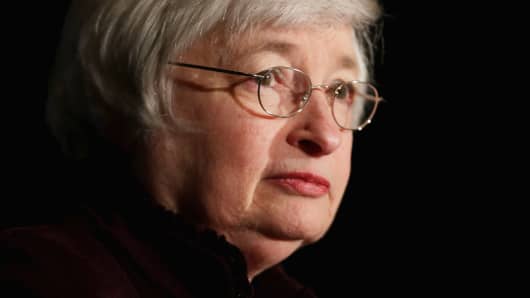The minutes from the latest Federal Reserve meeting give more credence to the notion that the Fed will raise rates sooner rather than later, given the improvements in labor markets and thanks, in part, to an unexpected lift in headline inflation.
But, while inflation hawks seem to have made some progress in bringing other Federal Open Market Committee members over toward their view, that labor market slack is diminishing and that headline inflation WAS rising, their view is predicated on a number of factors that have shifted in recent weeks.
Read MoreFive reasons the Fed should raise rates now
Commodity prices have fallen sharply since the last Fed meeting, labor markets DO look better, but housing is still struggling, the recent jump in housing starts notwithstanding, and the global economy looks weaker than it did a month and a half ago.
And while the financial markets look a bit skittish in the wake of the minutes' release, what is being ignored is that many Fed officials still see the labor markets performing in sub-optimal fashion.
No doubt, Janet Yellen and Vice Chair Stan Fischer, are among them.
Read MoreMere coincidence or freaky Fed?
It does not seem to me that, while the economy is much improved, a pre-emptive strike on phantom inflation would do the economy much good.
It certainly would not secure a rebound in residential real estate, nor would it create a cushion against global economic weakness, or geopolitical risks, two of the three areas the Fed identified as concerning.
I will make the bet that Fed rate hikes are still not coming until the second half of 2015 and that those who appear to have the upper hand in the current argument will begin to lose traction as headline inflation wanes, global interest rates remain depressed and geopolitical risk remains high.
Read MoreWall Street expects really dovish Fed on rate hikes: survey
The Fed has a lot to think about, even if labor markets are showing signs of improvement. Against the backdrop of concerns already mentioned, labor force participation rates remain near 40-year lows and wages are not rising sufficiently to ignite an inflationary spiral.
I am all for the Fed normalizing interest rates. But that should happen when we are certain the world is normal enough to handle it.
Commentary by Ron Insana, a CNBC and MSNBC contributor and the author of four books on Wall Street. He also delivers a daily podcast, "Insana Insights," and a long-form weekly version, both available on iTunes and at roninsana.com. Follow him on Twitter @rinsana.



